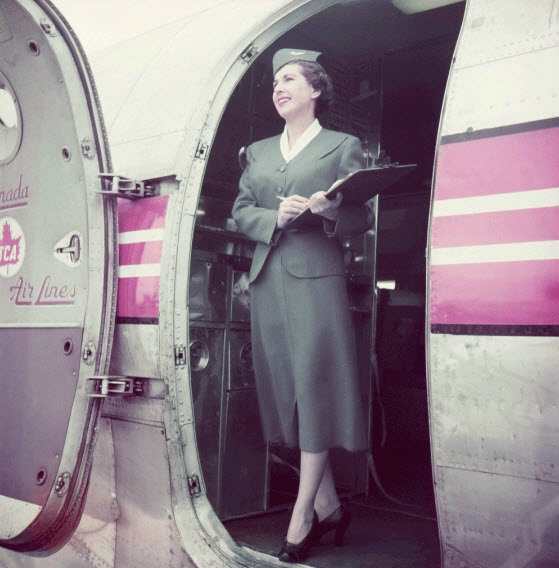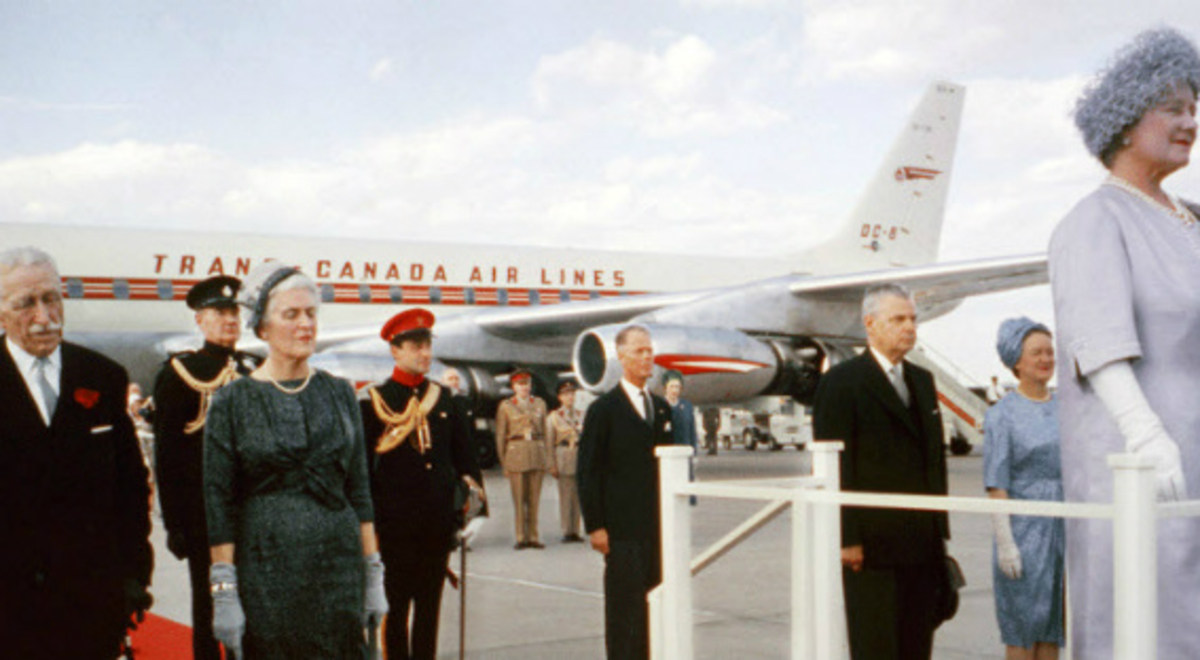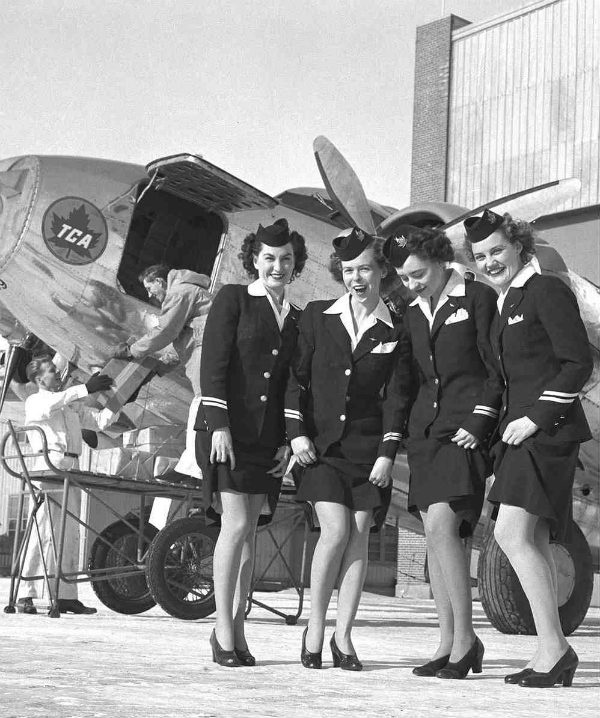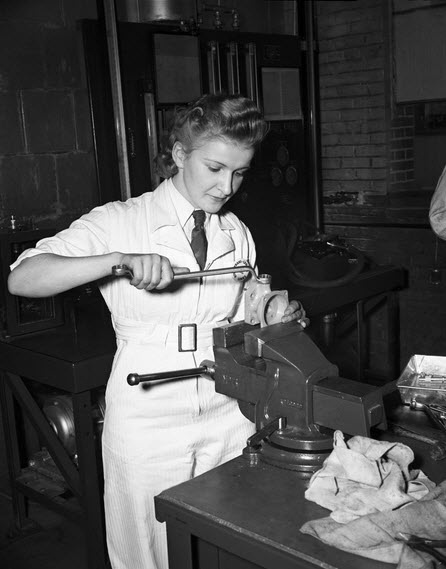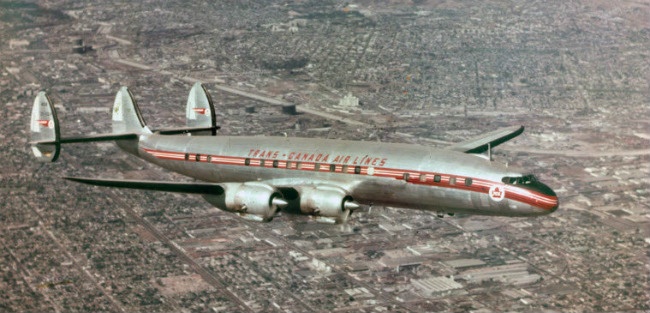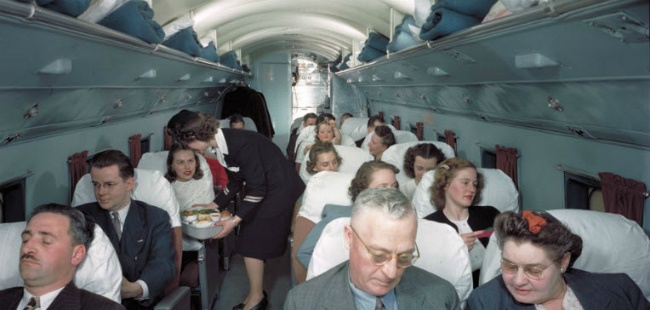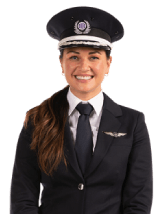We've come a long way, baby.
In the Golden Age of glamour, sophistication filled the air like a fragrant perfume, style was a ritual ceremony from the confident dip of a hat to the graceful tip of a glove, and flying was a prosperous sign of the times. Aviation opened a new world of innovation and indulgence and truly brought the future to the present.
Here’s a look at some of the best and brightest highlights from the Golden Age of flying, from the first commercial transatlantic flight to the first hot in-flight meal, each milestone was one for the history books.
Image Courtesy of Air Canada
Dress
Flight Attendants
Lucile Garner Grant with TCA's first president, James S Hungerford. Image Courtesy of Air Canada
Image Courtesy of Air Canada
Flight attendants epitomized Golden Age glamour in pillbox hats, tailored skirts, pressed blouses, and white gloves. Trans-Canada Air Lines’ first female flight attendant and trained nurse Lucile Garner Grant designed the early flight attendants’ uniforms, custom-made by a popular Vancouver tailor. In 1943, Tip Top Tailors took a turn at dressing the TCA flight attendants and designed a uniform with a navy blue blazer, matching pencil skirt, white gloves and of course a pillbox hat with the TCA logo. The flight attendant uniforms of the 1970s introduced a mix-and-match collection for individual combinations and style. The collection included only 51 pieces, all in red, white, blue and of course, brown.
Passengers
In the Golden Age of glamour, dressing in your best fur or jacket was an unwritten rule. In the 1950s and 1960s, flying was for the elite, those who could afford the experience. So it was essential to look the part, too.
Women in the Workforce
Image Courtesy of Air Canada
Since the Second World War, it was integral that more women joined the workforce as more men were being shipped off and enlisted in the Armed Forces. Rosie the Riveters across the country donned coveralls, held down the fort, and redefined the image of beauty and strength.
Routing Milestones
Image Courtesy of Air Canada
1914 – First commercial flight across Tampa Bay, from Tampa to St Petersburg
1920 – First international air service between Florida and Cuba
1936 – Pan American Air Lines inaugurates trans-Pacific passenger service
1937 – Trans-Canada Air Lines kicks off passenger operations from Vancouver to Seattle
1939 – Trans-Canada Air Lines inaugurates transnational passenger service between Montreal and Vancouver
1941 – Trans-Canada Air Lines launches the first transborder service from Toronto to New York City
1942 – Trans-Canada Air Lines charters across the Atlantic as part of the war effort
1942 – Canadian Pacific Air Lines pioneers the “Atlantic Bridge” from Canada to Britain
1948 – Trans-Canada Air Lines inaugurates two new international air services, one to Bermuda and one to the British West Indies from Montreal and Toronto
1950s – Trans-Canada Air Lines introduces service to Paris, Brussels, Vienna, Zurich, Tampa and Antigua
1950s – Canadian Pacific Air Lines inaugurates service to Lima, Buenos Aires and Santiago
1952 – British Airways is world’s first commercial jet to fly from London to Johannesburg
1957 – Trans-Canada Air Lines launches their first non-stop flight from Toronto to Vancouver
1985 – Air Canada (formerly Trans-Canada Air Lines) inaugurates its longest route ever from Toronto to Singapore
2015 – Air Canada provides direct passenger service to more than 190 destinations on five continents
Price
Image Courtesy of Air Canada
In 1937, flying from Vancouver to Seattle with Trans-Canada Air Lines cost $7.90 for a one-way ticket, or $14.20 roundtrip. The Lockheed Electra turboprop aircraft could carry two passengers and the trip took 50 minutes to complete.
In 1954, commercial aviation was rising in popularity - as was the price of flying. To curb costs for flyers, TCA started to add more seats and passengers to its aircraft, enabling TCA to introduce a "tourist class" economy fare, which lowered fares by up to 20 per cent.
Seats
In the 1950s, economy class cabins were row after row of overstuffed, reclining armchairs with a generous amount of legroom. The astronomical cost of flying would eventually change this concept, by adding more seats on an airplane to lower the cost. This form of passenger loading started to trend amongst airlines, inspiring Trans-Canada Air Lines to expand its fleet to accommodate the overall demand.
In 1954, TCA would expand its fleet to include eight brand new state-of-the-art Lockheed Super Constellations, among the largest aircraft in the world, fully loaded with all the newest bells and whistles. These “Super Connies” fit an impressive 63 passengers, a major contrast to the Lockheed Super Electra aircraft’s capacity for 10 passengers.
Seat pitch (the eye-level distance between your seat and the seat in front of you) hasn’t changed much since the 1940s, but the evolution of comfort most certainly has, especially in business class.
In-Flight Meals
Image Courtesy of Air Canada
Hot meals were finally introduced on Trans-Canada Air Line’s Douglas DC-3 aircraft in 1946. Passengers could choose from a menu of scrambled eggs, assorted cold meats, and casseroles, served on proper porcelain dishes. Before this, all meals were as cold and frozen as the passengers onboard non-pressurized cabins.
Smoking
In 1938, Trans-Canada Air Lines flight attendants always kept their satchels stocked with cigarettes and matches for their passengers. Cabins were split in to smoking and non-smoking sections and some airlines even had smoking lounges for passengers to kick back, have a drink and enjoy the ride. Air Canada introduced entirely non-smoking flights by 1986 and by the 1990s, smoking was being banned by airlines around the world.
In an ever-evolving industry, comfort, decadence and glamour are always in style. The romance of jet-setting around the world has never lost its luster and aircraft engineers and developers continuously dazzle with thoughtful, intuitive design. It can be said that the Golden Age of travel has never ended, that it’s just gotten started. Where will it take us next?
